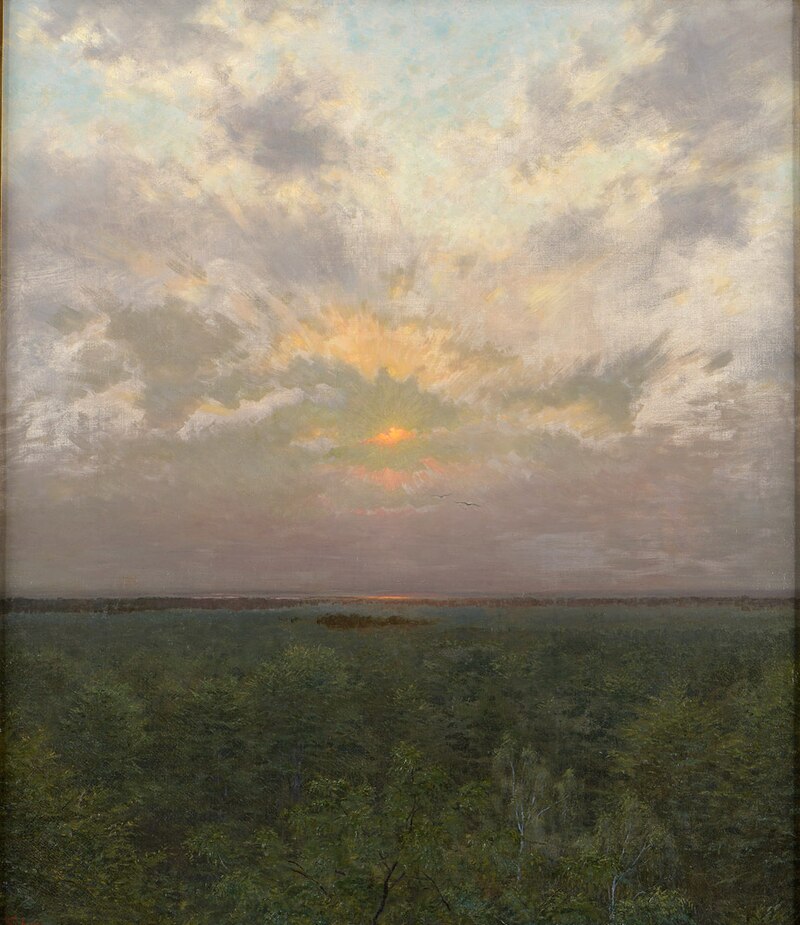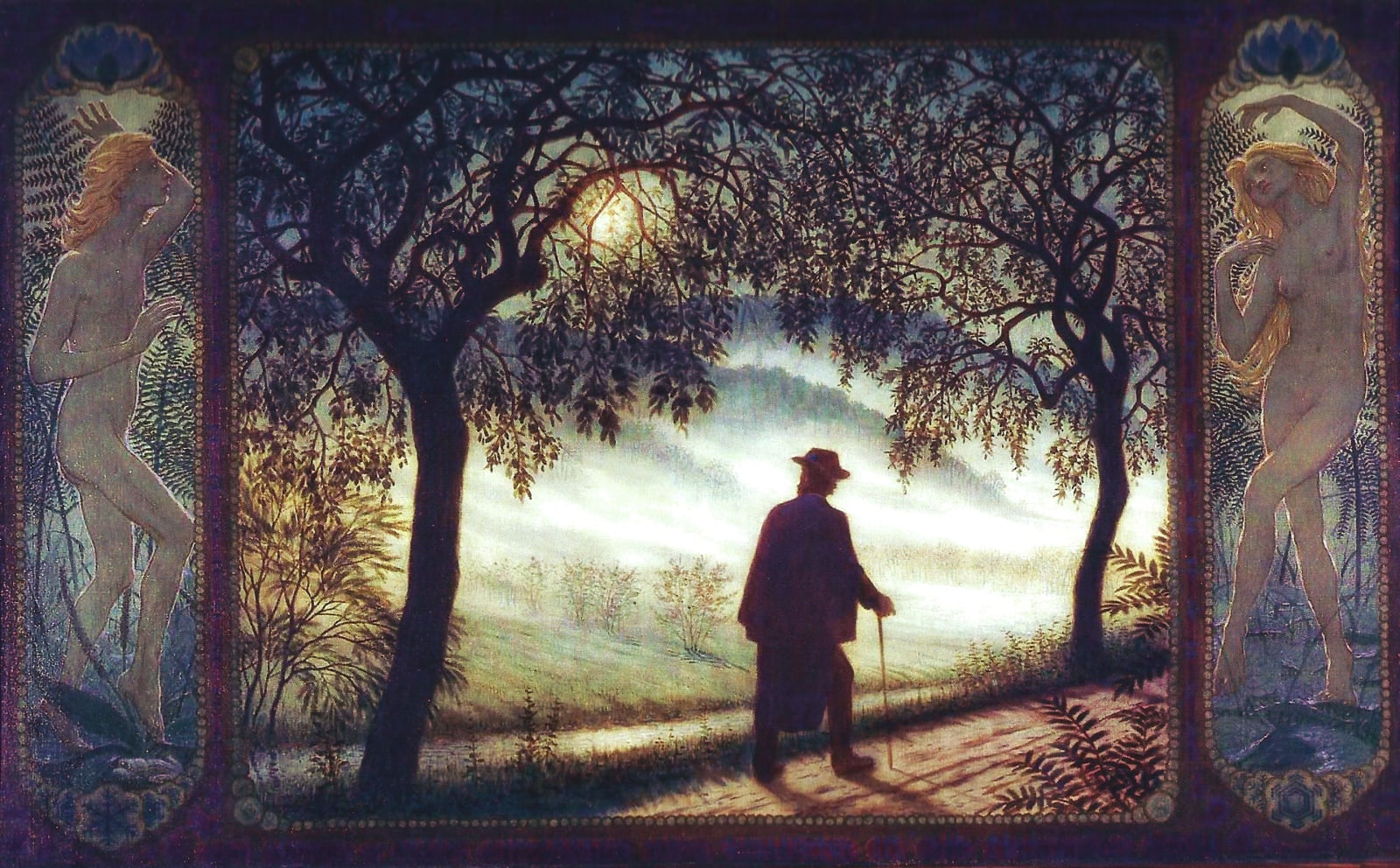The ancient mind intuited that what appears is only half of what exists. The visible is the clothing of the invisible, the surface of the flame rather than its source. Kant gave this intuition a rigorous name when he spoke of the noumenon and the phenomenon. The distinction was philosophical, but it concealed an older metaphysics.
Beneath his critical method, we can still hear the echo of a forgotten mystery: that the world is a mirror and behind its reflection burns the fire of the Real. The Greeks called the seen world phainómenon, from phaínesthai: to shine or appear. The noumenon, from noeîn, to think or to intuit, describes that which is grasped only by the intellect. Between the two stretches the veil of human perception, the limit where consciousness begins its long apprenticeship in discernment.
I. The Etymology of Appearance
The word phenomenon has its root in phaínesthai. In turn, this contains the verb phaos, light, from which spring words such as phantom, phase, and fantasy. To appear is to emerge into luminosity. The phenomenon is an event of revelation; it is what the world shows of itself in the act of becoming visible. But that visibility contains a secret: it depends upon what it hides.
The form that shines before the eye presupposes an unseen cause, an origin that cannot itself appear. The phenomenon is already a symbol, since it points beyond its own boundaries toward the principle that sustains it. The ancients would have called this principle the Logos, the Light behind light, the uncreated source whose brilliance would blind mortal sight. If we study appearances, we trace the reflection of this hidden Logos through the material of perception, as one may follow the trembling of a flame through a hall of mirrors.
II. The Etymology of Thought
Noumenon comes from noeîn, to perceive through the nous, the intellectual eye. It is related to nóos, the faculty of spiritual understanding. While the phenomenon is addressed to the senses, the noumenon belongs to the pure act of intellection. In Kantian language it is the “thing in itself”, the reality independent of our perception. But this independence does not imply separation; it designates a depth.

The noumenon is not elsewhere; it is within, beneath, behind. It is the unseen dimension that gives existence its weight and continuity. If we speak of it, we acknowledge that the fabric of the world is woven from something more enduring than sense-data. The Greeks knew that the nous contemplates the eternal pattern reflected through mutable forms. The noumenon is a presence. It is what thought perceives when it turns inward and finds that the mind itself participates in a greater Mind. Between the light of appearance and the darkness of non-being, the noumenon stands as the luminous cause, the silent architect whose work the senses translate into shapes and colours.
III. The Passage Between Light and Mask
The relation of the noumenon and the phenomenon is a dialogue. One unveils itself through the other. The light projects the mask and the mask allows the light to be seen. When read with inward sight, the invisible world becomes the theatre of an unseen presence. This meeting of the invisible and the visible is called the numinous today. The term, drawn from numen – the nod or will of a god – designates the moment when the noumenal burns through the phenomenal and the soul trembles before it. Rudolf Otto spoke of it as mysterium tremendum et fascinans: a mystery that terrifies and attracts. Jung adopted the word to describe those irruptions of meaning that rise from the depths of the psyche with a sacred gravity, undoing the limits of the ego.
The numinous, then, is the phenomenal trace of the noumenal, the sudden event in which the invisible becomes inwardly perceptible. It is what happens when the mask shines through itself and reveals the light it conceals. The human being stands at that crossing. Consciousness is the bridge where the thing-in-itself becomes the thing-felt, where Spirit condenses into symbol. In the language of the sacred Name, the final He is precisely this passage. Spirit descends into form so that form may awaken and return to Spirit. The numinous is that awakening; the vibration of the invisible within the visible, the recollection of origin.
When we experience the numinous, we stand before the same truth that Kant could only name from afar. It is to sense, with trembling clarity, that what we perceive is not self-sufficient, that the world is charged with a density of being that exceeds it. But the excess does not abolish the form; it transfigures it. The ordinary object becomes an icon. The moment becomes eternal. The phenomenon reveals itself as participation in the noumenon. What the intellect calls unknowable, the soul feels directly as awe.
The hermetic mind recognises this tremor as the point of reintegration. Between the light and the mask there is no real division, only degrees of transparency. When we live in awareness of the numinous, we let the surface grow clear again, we remember that all manifestation is a letter written in the alphabet of the Divine. The task is not to flee from the phenomenal, but to perceive through it. The numinous restores that sight. It makes the world itself a revelation and it turns experience into sacrament.
Κύριε ελέησον
